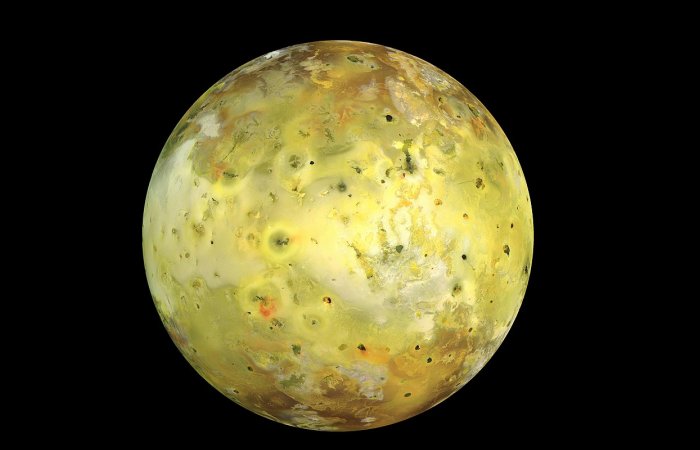Juno Mission Captures Images Of Volcanic Plumes On Jupiter’s Moon Io
MessageToEagle.com – A team of space scientists has captured new images of a volcanic plume on Jupiter’s moon Io during the Juno mission’s 17th flyby of the gas giant.
On Dec. 21, during winter solstice, four of Juno’s cameras captured images of the Jovian moon Io, the most volcanic body in our solar system. JunoCam, the Stellar Reference Unit (SRU), the Jovian Infrared Auroral Mapper (JIRAM) and the Ultraviolet Imaging Spectrograph (UVS) observed Io for over an hour, providing a glimpse of the moon’s polar regions as well as evidence of an active eruption.

“We knew we were breaking new ground with a multi-spectral campaign to view Io’s polar region, but no one expected we would get so lucky as to see an active volcanic plume shooting material off the moon’s surface,” Scott Bolton, principal investigator of the Juno mission and an associate vice president of Southwest Research Institute’s Space Science and Engineering Division, said in a press release.
“This is quite a New Year’s present showing us that Juno has the ability to clearly see plumes.”
JunoCam acquired the first images on Dec. 21 at 12:00, 12:15 and 12:20 coordinated universal time (UTC) before Io entered Jupiter’s shadow. The Images show the moon half-illuminated with a bright spot seen just beyond the terminator, the day-night boundary.
“The ground is already in shadow, but the height of the plume allows it to reflect sunlight, much like the way mountaintops or clouds on the Earth continue to be lit after the sun has set,” explained Candice Hansen-Koharcheck, the JunoCam lead from the Planetary Science Institute.

Credit: NASA/JPL-Caltech/SwRI
At 12:40 UTC, after Io had passed into the darkness of total eclipse behind Jupiter, sunlight reflecting off nearby moon Europa helped to illuminate Io and its plume. SRU images released by SwRI depict Io softly illuminated by moonlight from Europa. The brightest feature on Io in the image is thought to be a penetrating radiation signature, a reminder of this satellite’s role in feeding Jupiter’s radiation belts, while other features show the glow of activity from several volcanoes.
“As a low-light camera designed to track the stars, the SRU can only observe Io under very dimly lit conditions. Dec. 21 gave us a unique opportunity to observe Io’s volcanic activity with the SRU using only Europa’s moonlight as our lightbulb,” said Heidi Becker, lead of Juno’s Radiation Monitoring Investigation, at NASA’s Jet Propulsion Laboratory.
Sensing heat at long wavelengths, the JIRAM instrument detects hotspots in the daylight and at night.
“Though Jupiter’s moons are not JIRAM’s primary objectives, every time we pass close enough to one of them, we take advantage of the opportunity for an observation,” said Alberto Adriani, a researcher at Italy’s National Institute of Astrophysics. “The instrument is sensitive to infrared wavelengths, which are perfect to study the volcanism of Io. This is one of the best images of Io that JIRAM has been able to collect so far.”
MessageToEagle.com










